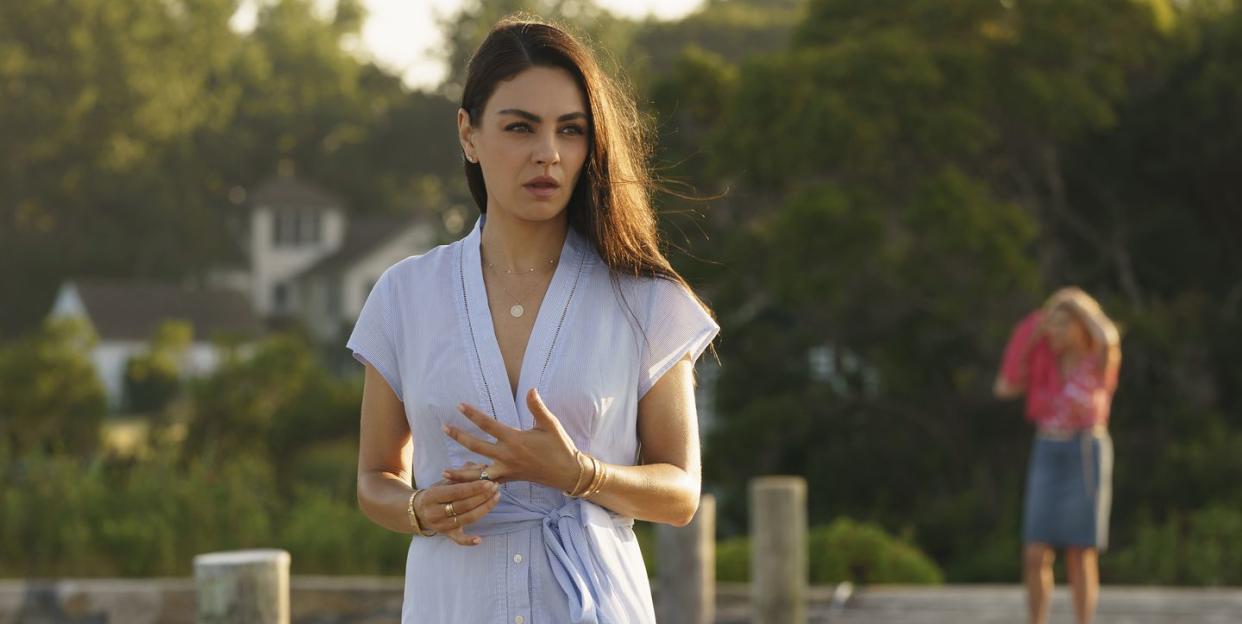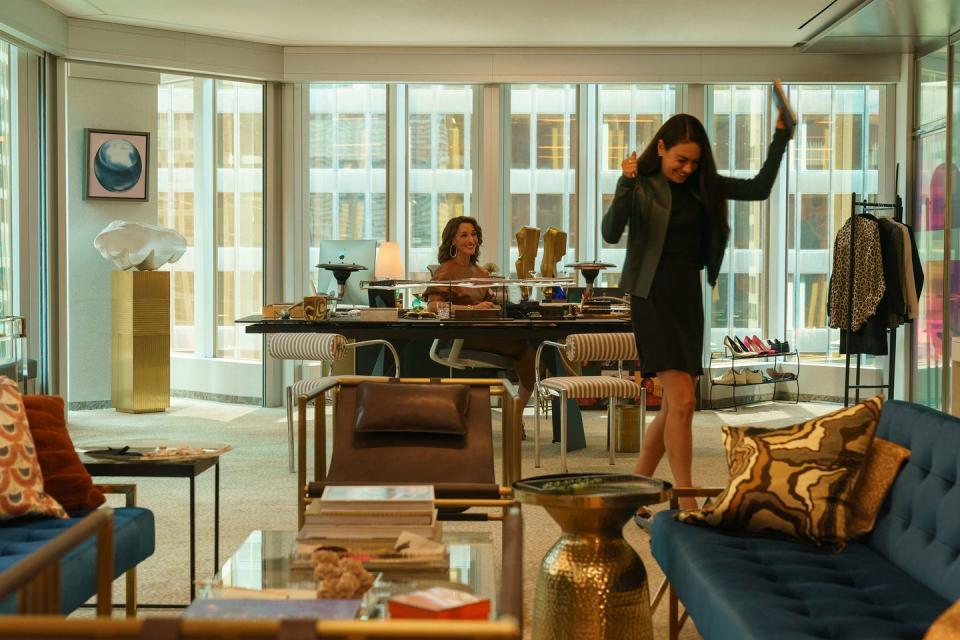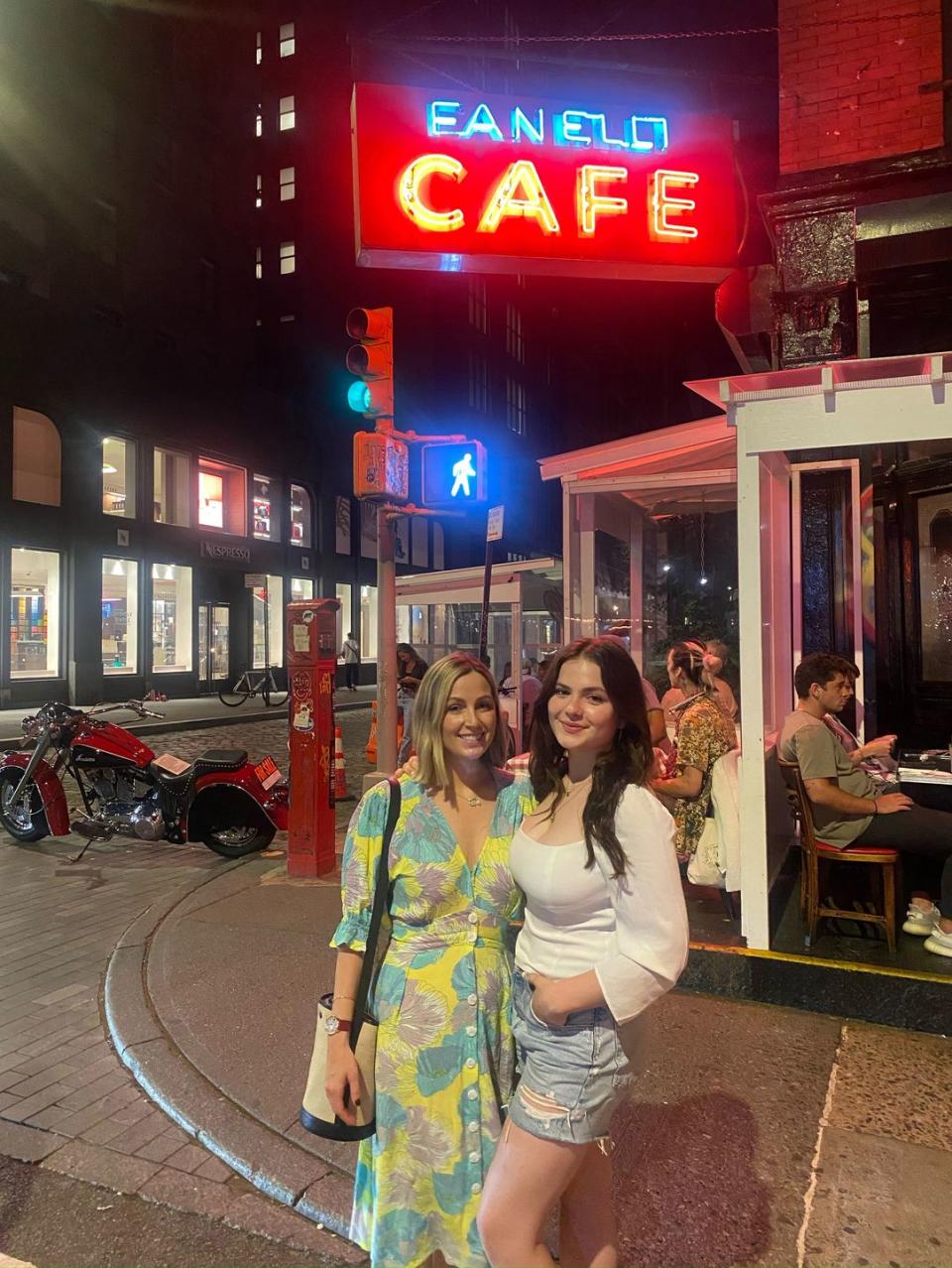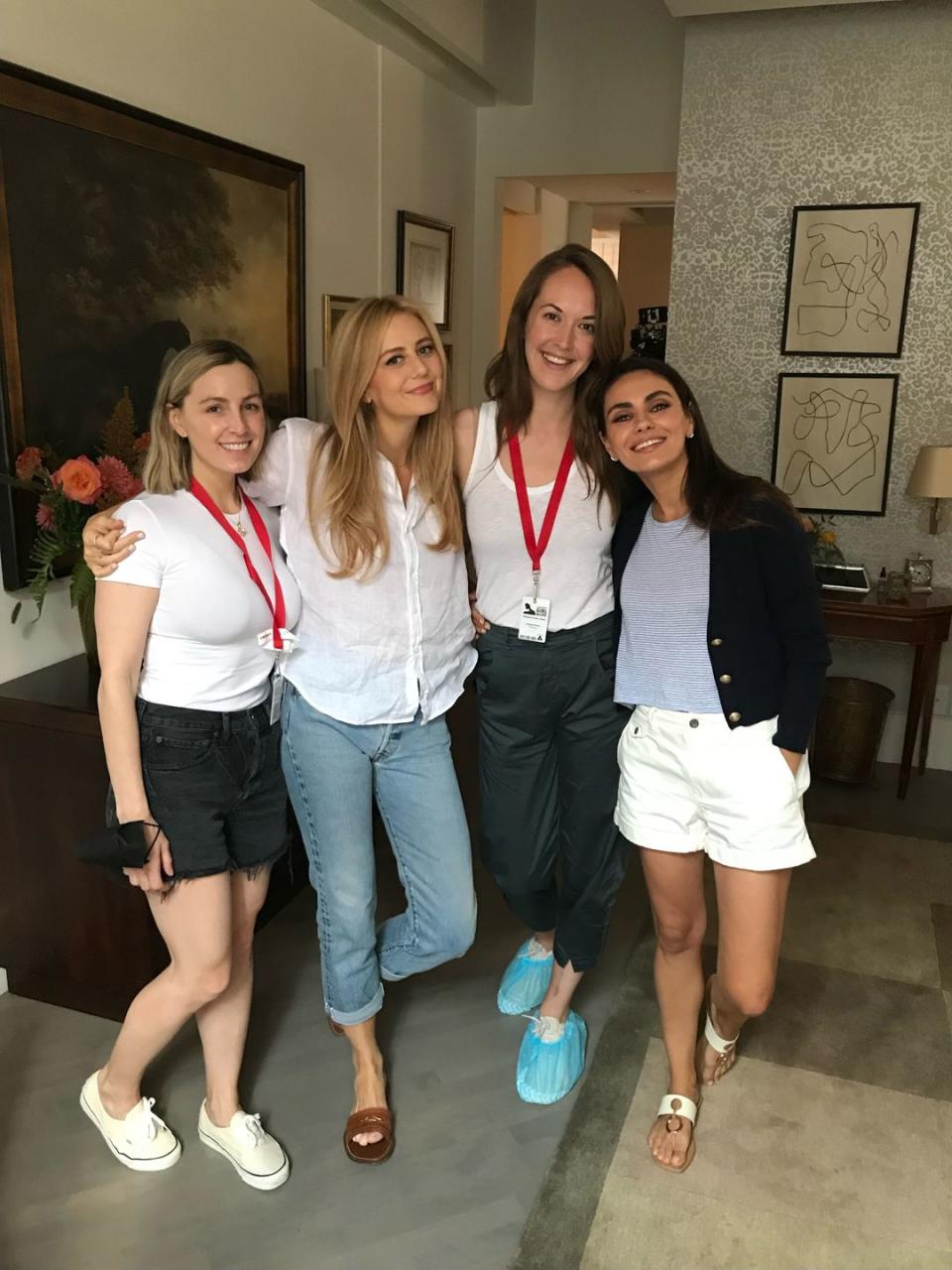Why 'Luckiest Girl Alive' Is Sparking New Discussions on Trauma

Jessica Knoll’s 2015 novel, Luckiest Girl Alive, grabbed readers’ attention with its sharp-tongued narrator, Ani FaNelli, a magazine editor and social climber determined to break free from her shadowy past. Fans included Reese Witherspoon, who snapped up the movie rights before it went on to become one of the best-selling fiction debuts of that year. Then in 2016, Knoll published a frank essay on Lenny Letter disclosing that some of the most harrowing events from her lead character’s traumatic backstory were drawn from her own experience as a teenager.
With this week’s release of Luckiest Girl Alive on Netflix, Knoll is reflecting on the novel’s winding journey to the screen. Determined to keep creative control of this incredibly personal story, Knoll managed to retain sole writing credit on the film adaptation and also served as an executive producer. But it was an uphill battle after the initial production deal fell apart. “There were many times over the last seven years where I was like, it had a good run. Something else I’ll write one day will get made, but it’s just not going to be this. It’s just too hard,” Knoll recalls thinking. The project came together again when Mila Kunis agreed to take on the lead role, a raw depiction of a guarded woman shaped by violence, ready to deceive in order to thrive, but yearning to show her authentic self.
Now 38 and living in L.A., Knoll speaks with BAZAAR.com about the many parts of her own life that found their way into Luckiest Girl Alive, and how her years as a magazine editor in New York City prepared her for Hollywood (“It just gave me the sharpest elbows”).
What finally fell into place to get this movie made after the initial deal fell through?
Netflix was the one that said, “We want you to go to Mila Kunis.” I remember our director, Mike [Barker] saying, in his British accent, “That feels dangerous and sexy.” I was a little like, “Yeah, this would be amazing, obviously, but she’s going to turn it down. … These huge actresses, for whatever reason, are not into this role. It’s too dangerous, too unlikable. You need someone who’s hungrier than a Mila Kunis.” Then she read the script and was like, “This is really cool and kind of weird, and I’m in.” And I was just on the ground! I couldn’t believe it.
The movie really dissects Ani FaNelli’s anxieties and coping mechanisms as she prepares for her dream wedding. Seeing it on the screen now, does anything about the character strike you in a new way?
Definitely the eating stuff is really a shift for me, perspective-wise, in terms of how I thought about that character. Also how much of my own issues around eating were embedded in that character. Around 2020, when we were editing the script with Mila as a creative producer, I was returning to my book a lot to pull out different passages. It was pretty amazing because I had, at that point, sought treatment for disordered eating, which I clearly was suffering from when I wrote the book.
When I would read Ani’s obsession with food and working out and being thin, I was just like, “I cannot believe that I used to be like that.” I’ve just moved into such a more peaceful place. So I think when I see that onscreen and see her worrying about how she looks and how much she eats and fitting into her wedding dress, the bingeing and trying to hide it from people—which is also something I used to do—I’m really struck by how much I was suffering. And I think when you are, you don’t realize it. You’re like, “No, it’s just my life. Everything’s fine.” And then, you get better and you look back, and you’re like, “Wow, I wasn’t doing too well back then.”
In the latter half of the movie, there’s a flashback where young Ani is on a field trip to New York City and encounters a stylish woman who “cut a path through New York City simply because she looked like she had more important places to be than anyone else.” Young Ani makes the goal to become like that woman. You spent years in New York as a magazine editor. What did you want to capture about that world?
For me personally growing up, I was obsessed with magazines. I had every magazine, I had Jane, I had Allure, I had Cosmo. I had all of them. I think I still have so many old copies at my parents’ house. As someone who was suffering and in a lot of pain in the place that she was in, magazines were escapism for me. I loved reading about these career women and their lives. There’s a meme that’s blowing up right now about how women’s magazines really convinced a lot of people that going “day to night” was going to be a big part of their lives. And I remember, yes, that’s what I felt when I would read them.
Like, “Oh, my God, these women have these crazy, cool lives. I want that. I want to be one of these women. I want to wear high heels. I want to work 10 hours a day, and then go out to dinner.”… And magazines allowed me to envision a life for myself where I was powerful and respected and smart. Those were not the things that I was when I was in high school reading them. When I got to New York, it was honestly everything I dreamed it would be when I was a little kid.

There’s a key relationship between Ani and her editor in chief, Lolo, played by Jennifer Beals. They work at the very Cosmo-like publication The Women’s Bible. What was your experience in a largely female work environment like that?
I don’t think it’s any great surprise to anyone to hear that working with a lot of women can be treacherous at certain points. But there’s something about that world that it just gave me the sharpest elbows. It truly did. I felt like it was boot camp for the world.
In writing this script—or any script that I’ve worked on—the notes documents are insane. They are coming from all the different producers. Then the studio people. Then if the actress is a producer, they have their own set of notes. And this is on every single draft you write, every single scene that you’ve already written 30 different times. … People would say to me, “As a writer, what we respect about you the most is that you’re really good about taking notes. You don’t complain, and you find the ones that you know are good, and you find ways to work with them while still remaining true to your voice.” I realized, it’s because of women’s magazines. It really prepared me well for this world. That’s what it takes to get a good piece of writing. You have to be able to take criticism.

Are there any moments from production with these cast members that have stayed with you?
We filmed partly in Toronto and partly in New York. Once we got to New York, I realized how special it was to have been in Toronto, because the paparazzi in New York around Mila was so intense that she couldn’t go anywhere, which I just didn’t expect. But in Toronto, we could all go out to dinners and get drinks and hang out like coworkers.
The thing that was the most fun was being on a set. It was like, these are your coworkers. You go to happy hour after and you’re having a dirty martini with Connie Britton and talking about the new moisturizers that you guys like, all of those things.
The next question contains a few spoilers. Near the end of the movie, there’s a scene where Ani’s on the subway, surrounded by people who have read an essay that she wrote. They’re feeling very seen by her frank account of rape and its aftermath. It’s not a scene from the book. It seems drawn more from the similar essay that you wrote for Lenny Letter. How did that scene develop?
It is definitely drawn from real life. We set the film in 2015, when the book came out, because it was important that it was pre-Me Too. Because it wasn’t yet commonplace for women to write these essays. We didn’t know yet if the world was ready to embrace them in kind. … Some of the things those women are saying [in the subway scene] are pulled from all the various messages that I got from women the day my essay came out.
One thing what we wanted to do in the movie was move past this idea that it was just about Ani and her experience and how it affected her. We wanted to show that this was more epic. That it was bigger than her, this story and what she had learned from it. That there were so many women out there who could connect with it. … While we were talking about how to accomplish that, I was in New York and I was in my hotel room, and there were only a couple of TV channels that worked. And First Wives Club was on. Love it, seen it a million times, obviously. In that movie, the women get to this point where they’re like, “Okay, we’ve gotten our revenge, but it still doesn’t feel good enough. It still doesn’t feel like we’re doing enough for our friend, Cynthia. How can we turn this into something more?” And from there, they opened the center in honor of their friend who died, and they’re helping other women. It was that moment where things suddenly clicked—I saw how this other movie did this similar thing, how powerful it was, and we figured it out from there.

For Ani, a lot of the novel is about the true shift in her perspective that happens after she discloses what happened to her. During the movie’s ending credits, viewers are directed to a website called wannatalkaboutit.com. How do you see the film as part of the conversation about the resources that rape and assault survivors could benefit from?
I think, clearly, we don’t do enough to support people in this country, although things have massively improved since I was a teenager. The biggest surprise for me when I wrote my essay was not just how many women I didn’t know who reached out to me, but how many women I did know who had a story. What I would hope to see is more moments like that, where the movie becomes a catalyst for someone turning to their partner of five, 10, 50 years and saying, “I have to get this off my chest finally,” because it’s a real unburdening when you can do that. And it’s a big step toward healing and growth.
This interview has been edited for length and clarity.
You Might Also Like